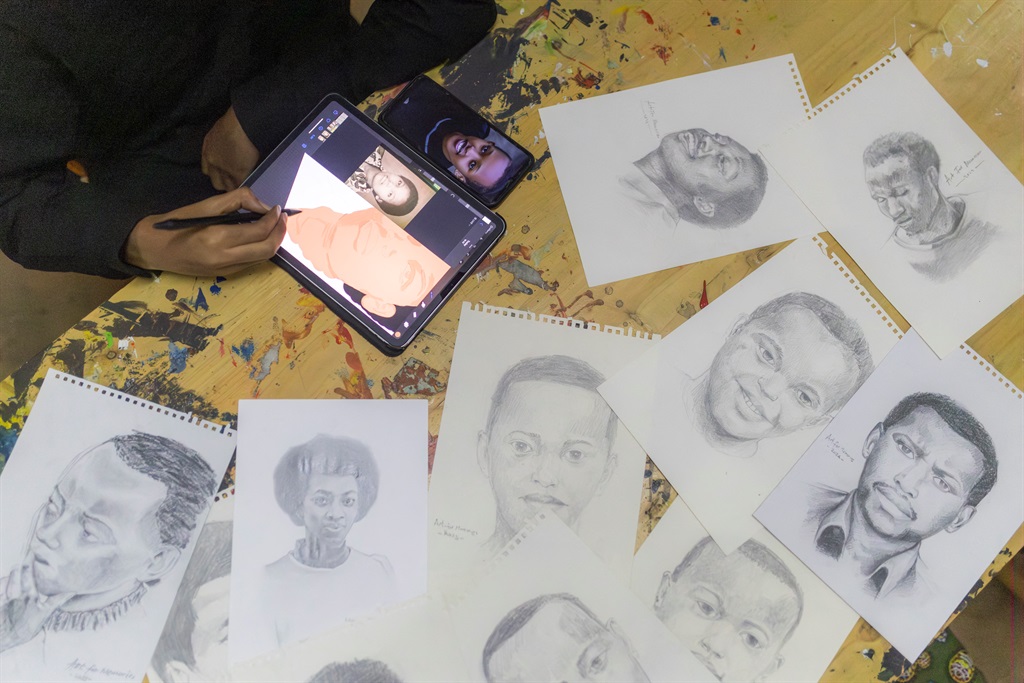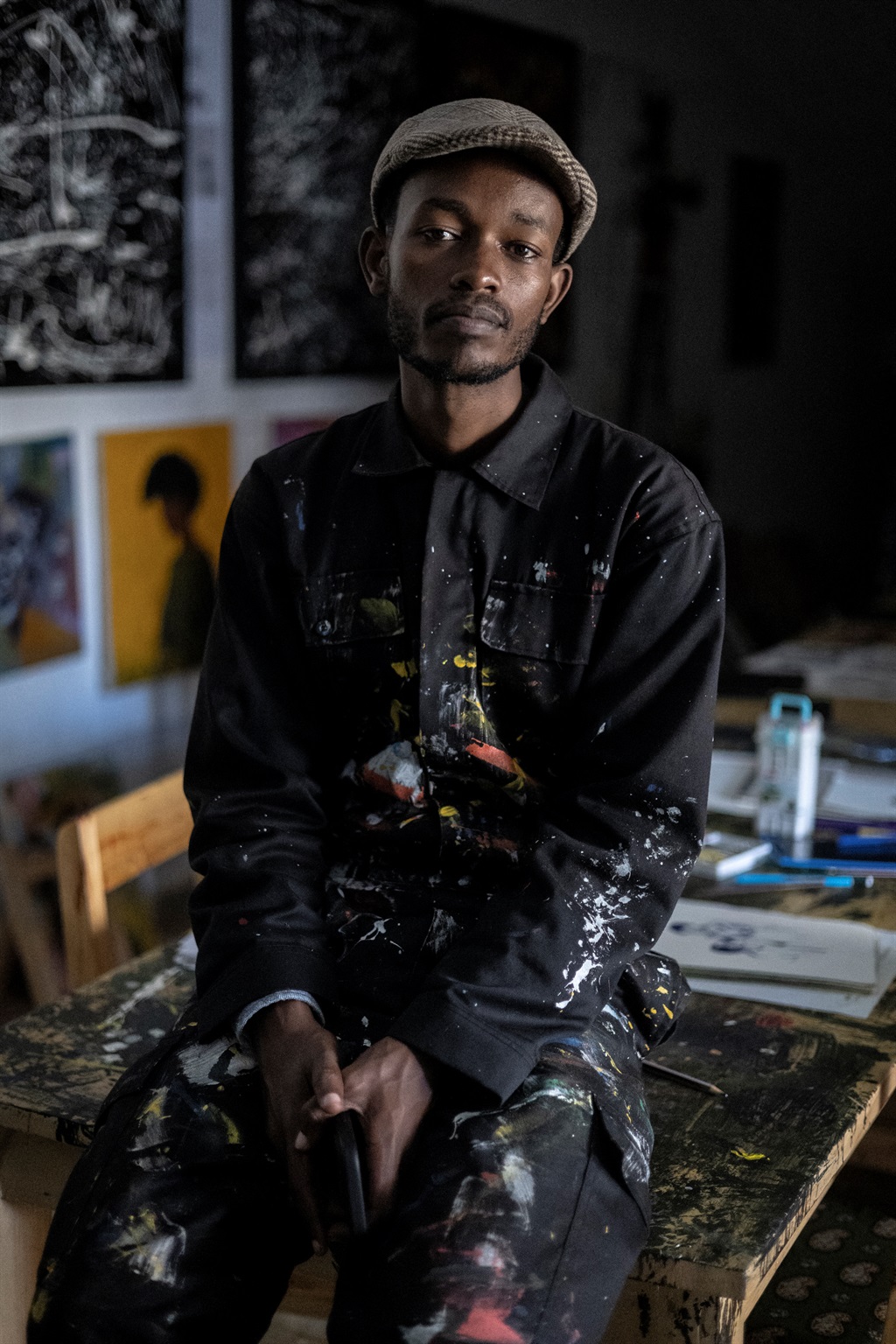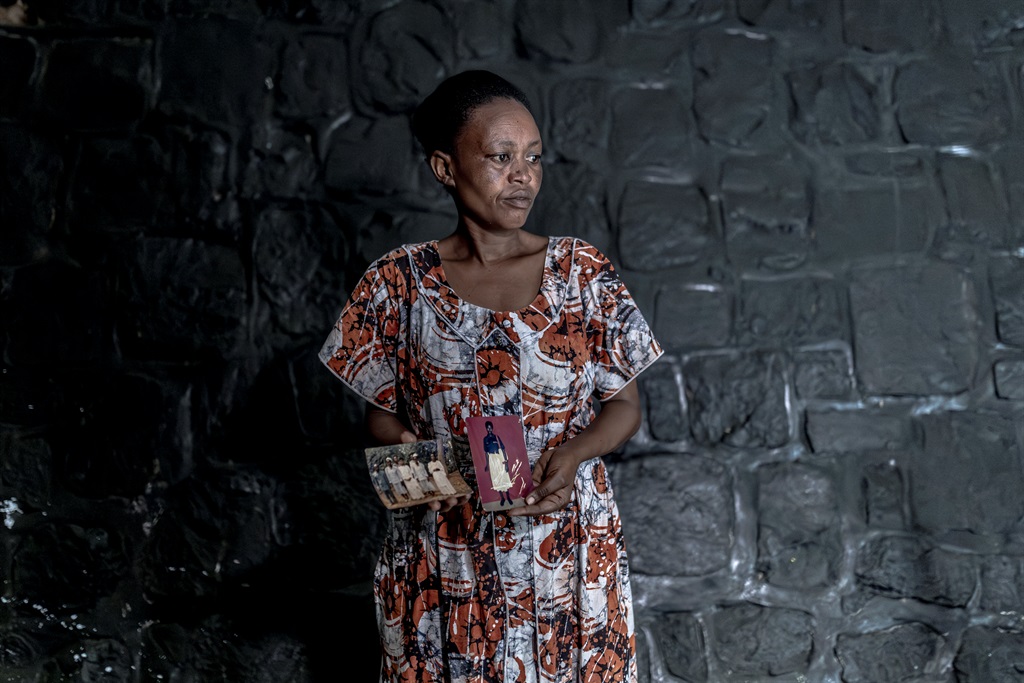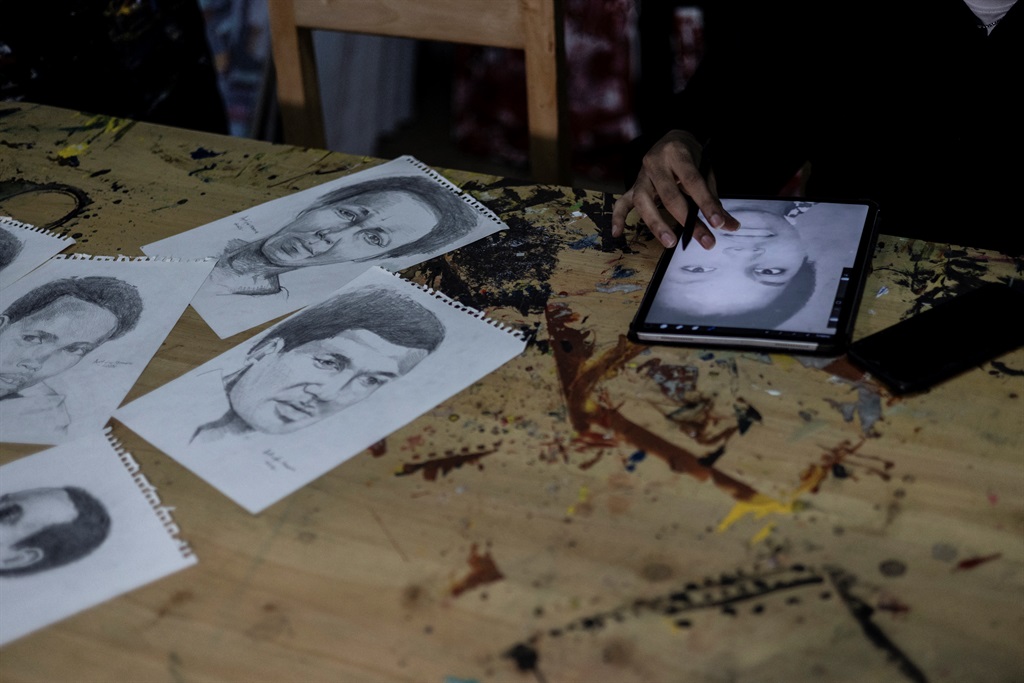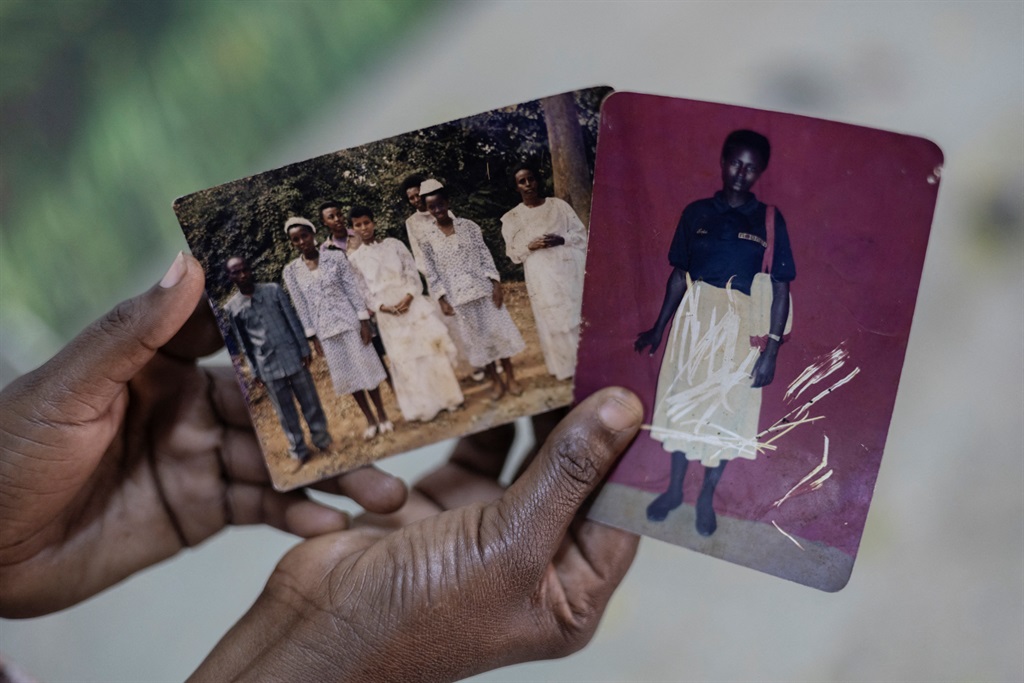
- A group of young Rwandan artists are painstakingly recreating portraits of victims of the 1994 genocide for their loved ones.
- The illustrators were not even born when the 100-day killing spree by Hutu extremists was unleashed against the Tutsi minority 30 years ago this month.
- Their work has not only helped preserve the memories of some of the 800 000 victims of the vicious bloodletting but also given the artists themselves a new insight into their country's deeply painful past.
On sketch pads or computer tablets, a group of young Rwandan artists painstakingly recreate portraits of victims of the 1994 genocide for their loved ones.
The illustrators - like the majority of Rwanda's population - were not even born when the 100-day killing spree by Hutu extremists was unleashed against the Tutsi minority 30 years ago this month.
Their work has not only helped preserve the memories of some of the 800 000 victims of the vicious bloodletting but also given the artists themselves a new insight into their country's deeply painful past.
READ | Ropes, brass, salt, stone: Reinventing jewellery in Kenya
The project - to create new portraits of the dead and missing copied from old and often damaged photographs - was the inspiration of Kigali artist King Ngabo.
The 28-year-old founded the Art for Memories initiative a year ago, during the last Kwibuka or remembrance commemorations for the genocide.
Since then, the collective says it has produced about 450 portraits of genocide victims, all for free.
Members of the team work together on a long wooden paint-smeared table in his Kigali gallery, the walls adorned with an eclectic mix of artworks.
'Bring back to life'
"We invite people to send pictures of their beloved ones, on emails, on social media, on WhatsApp," says Ngabo, his charcoal-coloured overalls spattered with paint.
"And then for those damaged pictures, we bring back in the studio... and bring it back to life."
Ngabo said that before starting the project, he thought he knew a lot about the genocide, having visited many memorial sites.
But he says he never before had the "privilege" of being able to talk to survivors of the mass slaughter that still haunts the tiny nation.
"So I have learned a lot, the memories..."
Genocide survivor Nyirahabimana Aliette, 41, could not hold back the tears after she handed over old photographs of her parents and older sister, all murdered in 1994.
"I would like someone to draw these pictures for me so I can keep them with me," she said, her voice breaking.
"(My children) ask me a lot of questions about what happened with the family," she added.
"Being able to see these drawings at home will allow them to have an image (of their lost relatives)."
The murderous rampage saw families and friends turn against each other, the killings fuelled by vicious anti-Tutsi propaganda broadcast on TV and radio.
"During the genocide against Tutsi, artists of that day used illustrations to spread the ideology of genocide against Tutsi," said Mucyo Martin, a 20-year-old independent illustrator.
"So now there is us young artists who make illustrations too; we decided to correct that."
Art student Manzi Yvan Bryan, 19, said the experience was invaluable in finding out more about the events of 1994.
"When I was a child, we learned about the genocide at school, and sometimes at home, my parents talk about it.
"But when I joined this initiative, I learned more... some things that I didn't know."




 Publications
Publications
 Partners
Partners





